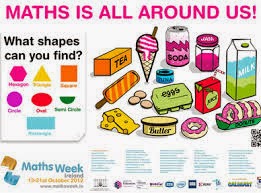Borrowing at least one book per week (to be read to, read with or read independently daily) will promote your child’s development as a reader. On the first day that the text is borrowed, you can begin reading the text to your child. The next day, encourage your child to join in an read with it you. As your child becomes more confident, familiar with the text and if they are ready to, they can have a go at reading independently.
Reader’s notebook responses will allow your child to express some their comprehension of the book they have read. Children may use it as often as they please to reflect on books they read. We would like to see the Preps reflect on at least one book in their notebook per week. Notebooks will be collected every Thursday.
The plastic zip up folder from your child’s essential items is to contain the items below so that it all stays together.
- Reader’s notebook
- Book/s from Junior School library.
- Picture story book that they have borrowed, provided it fits in the folder. Children may borrow a maximum of 2 books from the main library. They can be borrowed for 2 weeks (or earlier if you like), and can be renewed if necessary.
If your child would like to borrow multiple books from the Junior School Library, that is great too! Keep in mind that a text should be read multiple times to familiarise children with commonly used words and build their reading confidence.
Borrowing
During lunch borrowing time (Tuesday – Friday 11.10 to 11.40)
Before school (Tuesday – Friday 11.10 to 11.40)
During library borrowing time on Friday: an opportunity to borrow picture story books and change their reader/s before the weekend.
You can also share many daily reading activities with your child. Here are some ideas:
- Choose a variety of text types from your home library, local library and the school library.
- Read recipes, food labels, schedules, maps, instructions, and brochures.
- Read traffic signs and signs in stores and restaurants.
- Look up information in cookbooks, manuals, phone books, atlases and dictionaries.
- Read greeting cards, letters, and e-mail messages to and from relatives and friends.
- ‘I spy’ is a great game to draw attention to ‘initial sound’ in words. It can be played using the letter or sound.
- Brainstorming simple rhyming words (‘ent’ SENT, WENT, BENT, RENT) (‘at’ CAT MAT RAT FAT)
Reading is the quest for meaning. Keep in mind that it is important that your child’s reading experience is enjoyable.
INCIDENTAL MATHS EXPERIENCES
Maths is all around us.
Take every opportunity to count with your child, eg while shopping for fruit, counting clothes pegs etc.
Cooking is a perfect opportunity for counting and measuring ingredients.
Ask your child to help you solve everyday number problems. “We need four tomatoes to make our sauce for dinner, and we have only two. How many more do we need to buy?”
Play games using dice and cards. Rolling dice and adding or multiplying numbers. Add up the totals. Play the game backwards to practise subtraction.
Measure items found around the house. Have your child find objects that are longer or shorter than a shoe or a string or a ruler. Together, use a shoe to measure the length of a floor mat. Fill different containers with sand in a sandbox or with water in the bath, and see which containers hold more and which hold less.
Estimation. Estimate the number of steps from your front door to the edge of your yard, then walk with your child to find out how many there really are, counting steps as you go. Estimate how many cartons of milk your family will need for the week. At the end of the week, count up the number of cartons you actually used.
Compare and organize household items. Take cereal boxes or cans of vegetables from the cupboard and have your child line them up from tallest to shortest.
Identify shapes and sizes. When playing with your child, identify things by their shape and size: “Pass me a sugar cube.” “Take the largest cereal box out of the cupboard.”
Play “I spy”, looking for different shapes. “I spy something that is round.” “I spy something that is rectangular.” “I spy something that looks like a cone.”
Hunt for patterns around your house and your neighbourhood. Your child will find patterns in clothing, in wallpaper, in tiles, on toys, and among trees and flowers in the park. Encourage your child to describe the patterns found. Try to identify the features of the pattern that are repeated.


